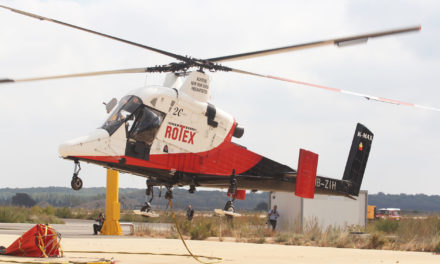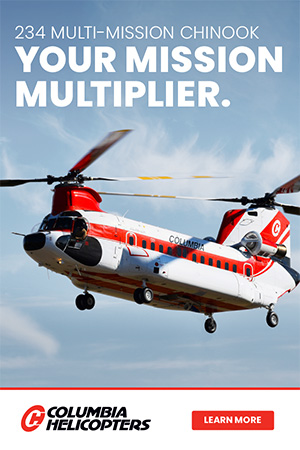Since 2011, the General Aviation Manufacturers Association (GAMA) annual report has taken helicopters into consideration. The statistics cited are based on figures provided by the manufacturers themselves and are far from exhaustive. They do, however, confirm several trends.
In 10 years, the worldwide fleet of civil helicopters (all engine types) has grown by 37.38% to reach 30,895 aircraft. This figure, taken from the most recent annual report issued by the General Aviation Manufacturers Association (GAMA), obviously does not take into account the difficulties encountered by much of the industry over the last five years. In fact, it highlights another trend altogether—a general tendency toward growth that flattens out the up and down cycles of the market. If fact, it confirms the fact that new aircraft enter the market faster than old or damaged helicopters are removed from it.
We might also add that, though it does not necessarily reduce their value, the figures cited in the report fail to take Russian and Chinese production into account. And the international helicopter community knows just how important Russian manufacturers are in the Russian market, even though Russian Helicopters claims its sales are almost exclusively based on historic relationships with government customers—Russian Helicopter executives attribute 82% of their sales to military contracts (see article p. XX in this issue). As for the Chinese, there’s hope for some degree of transparency. When Helicopter Industry contacted GAMA, the association alluded to discussions underway with AVIC Helicopter Company to include Aviation Industry Corporation of China figures in the report in the future.
Two helicopter superpowers
That said, an in-depth study of the information provided leads to several observations.
Given that GAMA has only been collecting data on helicopter deliveries since 2011, it is important not to draw conclusions too quickly.
Nevertheless, it is quite clear that global production is led by two main blocs of equal weight: Europe and the United States. The former is home to four manufacturers (Airbus Helicopters, Leonardo Helicopters, Hélicoptères Guimbal and NH Industries), while the latter boasts five (Bell Helicopter, Enstrom Helicopter Corp., MD Helicopters, Robinson Helicopter Company et Sikorsky).
European Airbus Helicopters is responsible for 68 % of deliveries (a figure to be taken with a grain of salt given that Leonardo Helicopters has not released its 2016 figures), while American performance is based on three major pillars (Bell: 28.6%, Sikorsky: 30.2% and Robinson:39.1%). The rest of the data nuances certain trends.
Three distinct trends
The data on manufacturers of piston helicopters—Robinson, Enstrom and Hélicoptères Guimbal (Schweizer stopped deliveries in 2013)—reveals three clearly distinct trends. First, Robinson’s 2008 figure of 893 deliveries is but a distant memory, with just 171 aircraft sold in 2016 (compared with 230 in 2015).
The introduction of the single engine R66 in 2010 allowed the company to take another tack and make up for decreased sales. But the arrival of Hélicoptères Guimbal on the market in 2014 implies the trend may reverse itself over the next 10 years. Indeed, the French manufacturer seems to be on an upward trend, with 50 aircraft delivered in 2016, compared with 44 in 2015 and 27 in 2014. Only time will tell whether the company continues to grow. As for Enstrom, the delivery of 12 helicopters in 2016 (compared with 20 the previous year, with a record 29 in 2005) seems to indicate—at best—a production plateau.
Plummeting figures, promising growth and stagnation: piston helicopters have met with very different fates.
When it comes to the large turbine engine helicopter family, the GAMA figures include information on each manufacturer’s best-selling aircraft—a great way to better understand manufacturers’ positioning on the market.
The stars
For example, Airbus Helicopters delivered 107 H145 family aircraft in 2016, as well as 104 H125s (Squirrels). These 211 helicopters account for more than 55% of the total 380 aircraft sold last year.
As for Bell Helicopter, the different types of 407 come in first, with 57 aircraft delivered. The 429 is second, with 28 deliveries, despite a sharp decline (52 deliveries in 2015, 53 in 2014, 56 in 2013). Nevertheless, the model is still doing well, and is expected to continue to do so for some time. Leonardo Helicopters’ 2015 champion (the manufacturer has conspicuously postponed releasing 2016 figures) was the AW139 (with 72 aircraft delivered, for 45 % of the company’s total).
Finally, Sikorsky comes in last, reminding interested parties that the civil and military markets are make up drastically different proportions of sales figures for different manufacturers. Of 181 deliveries, the American company counts 169 Blackhawk/Seahawk aircraft, which is 93.4% of the total. That’s even more than the 82% highlighted above by Russian Helicopters for government transactions…
By François Blanc.
©photo: SIKORSKY
















